A HeadStuff Halloween | A Selection of Horror Films for the Day Itself
Andrew Carroll looked at Kill List‘s domestic disharmony. Paddy O’Leary looked at the best horror films available on Netflix. Graham Connors examined the dangerous voyeuristic gaze in the modern slasher film. Now, to bring our Halloween features to a close, a selection of our film contributors discuss some of their favourite films to view at this sinister time of year. It’s time to get spooky.
Rosemary’s Baby (1968), dir. Roman Polanski
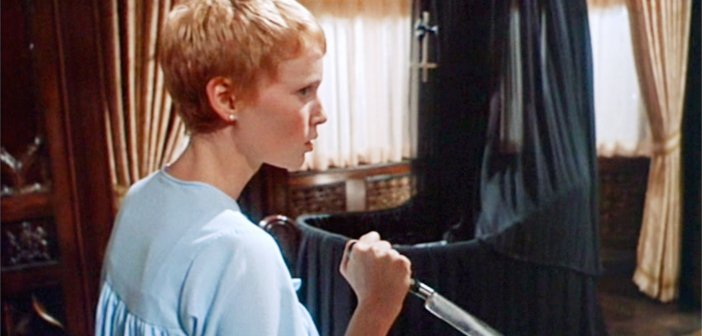
The third in Roman Polanski’s horror apartment trilogy (sandwiched between Repulsion and The Tenant), Rosemary’s Baby is a near-perfect exercise in creating and maintaining sustained dread. Rosemary (Mia Farrow) and her struggling actor husband, Guy (John Cassavetes), move into a new home and soon they are expecting a child. However, strange events begin to plague the mother to be. She suspects they are caused by Guy’s blossoming relationship with the Castevets (Ruth Gordon and Sidney Blackmer), their new neighbours.
Often the best horror movies can be read equally as dramas (The Orphanage, The Babadook, The Witch) and such is the case with Polanski’s adaptation of Ira Levin’s novel. Although a huge part of Rosemary’s Baby relies upon its occult-themed plot and iconography, the true terror comes from the story beats that are rooted in reality: alienation, sexism, sickness. As one is enraptured by the mystery at the film’s core, the audience begin to picture themselves in the protagonist’s place, played delicately by Farrow. “What would I do if those I loved most in the world began to ignore and turn on me when I was at my weakest?” – that is the truly horrifying element of Rosemary’s Baby and why it stands the test of time.
It’s worth mentioning that the film has achieved an almost mythic status in terms of how it worryingly foreshadows later true life events. Polanski – who brings so much directorial flair to proceedings, particularly his realistic and unsettling dream sequences – and his at the time pregnant wife, Sharon Tate, were targeted by cultists, leading to Tate’s death. On top of this, Mia Farrow’s domestic surroundings became a real-life horror due to the alleged sinister actions by her then husband Woody Allen. Also, the film’s central rape scene can’t help but recall future allegations made against Polanski. Is it possible the making of Rosemary’s Baby unleashed a wave of terror into its creator’s lives? Stephen Porzio
Texas Chainsaw Massacre (1974), dir. Tobe Hooper

Often considered part of the slasher movement, which it predates, The Texas Chainsaw Massacre is closer to an arthouse movie: one about those Americans left behind economically, and conservative terrors about what happens with the loss of the “traditional” family unit (but I’ll spare you the academic essay). Made for no money, featuring minimal score and shot with a flat style that dwells on rather than fetishising the horror; it’s certainly not the gorefest that the title – quite intentionally – evokes. For one thing, there’s no blood. Everything is implied but rarely shown. The most onscreen blood comes from a pinprick on the heroine’s finger that the almost vampiric grandpa seems to gain life by sucking from her.
It’s a film of disturbing imagery and weird tableaus, largely devoid of the ‘money-shots’ mainstream American horror would come to rely on. The iconic moment of Leatherface bludgeoning one of the teens with a mallet before slamming the shutters is shot wide and static, simply left there for you to absorb. This is to say nothing of the absurdly long, surprisingly intense chase scene, devoid of any real sound bar chainsaw revving and screams. Even amongst modern horror, it feels like an odd duck for how simultaneously restrained and yet off-the-wall it is. How many films end with no comeuppance for the villains and one lunatic dancing merrily with his chainsaw in the sunrise? Richard Drumm
The Thing (1982), dir. John Carpenter
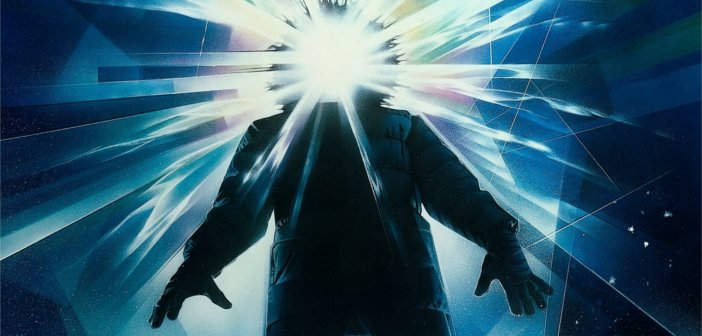
Visually John Carpenter’s The Thing is a terrifying gorefest but it’s unsettling message has real staying power. What if a millennia old alien wasn’t the most terrifying thing to be dug up in the Antarctic? What if deep-seated mistrust and suspicion were unearthed along with the form-shifting parasite? These are the questions John Carpenter’s film asks and the answers don’t bear thinking about.
The special effects by Rob Bottin are nothing short of incredible and still hold up in the most grotesque way possible: the scene of a medic having his arms bitten off by the chest of a man he is performing CPR on will fuel anyone’s nightmares. The ensemble cast deliver paranoia and pathos in equal measure and Kurt Russell and Keith David as MacReady and Childs respectively hammer home how hopeless the situation is. Add the bleak setting of the Antarctic as well as Ennio Morricone’s creeping score and The Thing stands as one of the greats. The ambiguous ending however is what defines the film as unforgettable and remains one the most nihilistic narrative moments ever put to screen. The Thing, like it’s metamorphic namesake, is terrifying at a cellular level. It provides no answers instead it asks deeply disturbing questions. Andrew Carroll
The Blair Witch Project (1999), dir. Eduardo Sánchez, Daniel Myrick
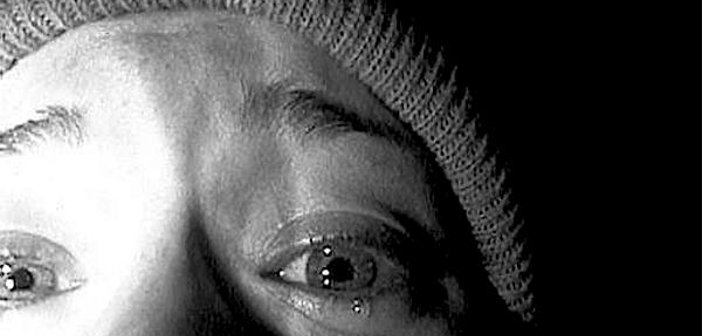
In October of 1994, three film-makers disappeared in the woods near Burkittsville, Maryland while shooting a documentary.
A year later their footage was found.
The idea of being lost is what makes The Blair Witch Project so effective a horror film, a fear that was perfectly exploited by the film’s directors Daniel Myrick and Eduardo Sánchez. Using the found footage method of film-making to create a living, breathing energy, it allowed the filmmakers to align the audience with their characters on screen as, with the vast majority of the film shot in close-up, we were very much in their space. Their fear was real, it was portrayed as real, and we believed it, as we weren’t really sure what to believe. The Blair Witch Project messed with our ability to pick fact from fiction. Marketed very effectively as a documentary, it marked the moment we realised the Internet could lie to us as vast audience numbers thought the film was real. And why not? In many ways The Blair Witch Project was an anti-film. It didn’t use any elements that audiences expected. There are no smooth edits, there’s no nicely balanced audio, there’s no clever camera work or incidental music, no fancy titles or graphics and absolutely no special effects. There is nothing in The Blair Witch Project that corresponds to our conception of what a blockbuster should look like. By the time audiences realised that they couldn’t decode the film it was too late, the characters were already lost and we had already taken those first few steps with them. Alone. And in the dark.
The Blair Witch Project is one of the greatest horror films ever made. Its effectiveness is not found in what we see on screen but rather what we conjure in our own imaginations. Don’t forget, we never see the Blair Witch, not once, not even a glimpse, perfectly proving that there is nothing scarier than that which you can’t see. Born just before modern horror films became truly cynical, The Blair Witch Project was something new and different and stands today as one of the only, truly immersive horror films ever made. Graham Connors
The Devil’s Backbone (2001), dir. Guillermo del Toro
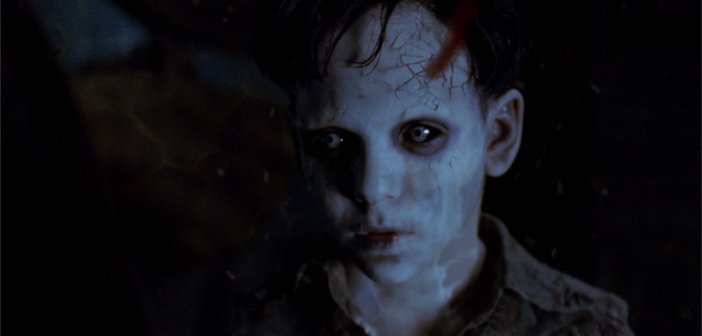
I’m putting this in here not because it’s a particularly frightening horror film, but because it’s something much, much rarer, and very special: a beautifully crafted cinematic ghost story. Both words are important there. While a lot of films with ghosts get the scares right, there’s very few that deliver a story as compelling and with such emotional depth as The Devil’s Backbone.
Towards the end of the Spanish Civil War, a young boy is abandoned at a remote orphanage. On his first night he encounters a ghostly presence that haunts all of the boys – ‘the one who sighs’ – and is told in a whisper ‘many of you will die’. From this simple premise Guillermo Del Toro tells a rich story of sacrifice, unrequited love, and betrayal where the ghost functions not as simply a device for suspenseful set pieces, but as the heart of the film’s story and ideas.
A monologue bookends the film, asking the question ‘What is a ghost?… Something dead that seems alive. An emotion suspended in time. Like a blurred photograph”. As the story unfolds it becomes more and more apparent that even the living characters are ghostly by this definition. Each lives in their own private limbo of frustrated desires, and as the ghosts prophecy comes to pass and a nightmare of destruction engulfs the orphanage, they’re forced to face up to this reality. Tom Rowley
The Babadook (2014), dir. Jennifer Kent
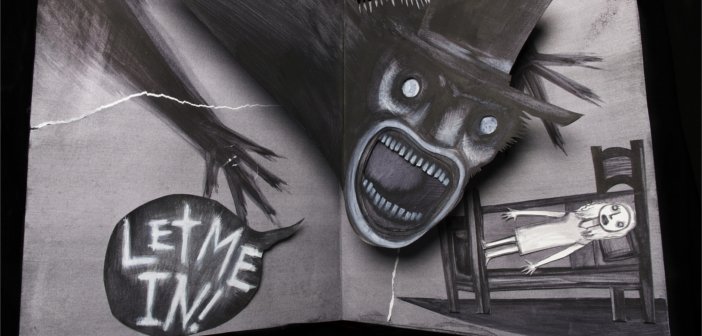
Upon its release in 2014, much was made of the thematic subtext within Jennifer Kent’s chiller The Babadook. Sure, on the surface it was about a shadowy wraith terrorising a single mother, but many critics noted that the film was also an affecting meditation on the gnawing trauma of personal grief.
Amelia has not truly acknowledged the devastation of her husband’s death six years previous, and she holds her son – who was born amidst the tragic loss – responsible. Add to this that her young son is loud and frustratingly uncooperative, and Amelia’s highly strained life is thrown further into bleak disarray. Viewers and critics interpreted the titular Babadook as the manifestation of this personal strife. If you set aside the subtext, and take it the film for its surface qualities, The Babadook is a deeply unsettling and highly effective chiller. Horrors have always operated through mounting dread and tension, and The Babadook is no exception. It doesn’t aim for the concussive jump-scares that are prominent in modern horror – though there are a few thrown in. Rather, the terror slowly bleeds in to the viewer’s conscience as the film progresses.
Similar to a lot of Korean horror, there are small unsettling moments that some viewers could actually miss. Like when Amelia is looking across into her elderly neighbour’s sitting room, the dark figure of The Babadook is seen lurking, concealed in shadow, in the far corner, staring back. Moments like that linger with the viewer long after.
So while it is a story with a deeper emotional resonance, it’s The Babadook’s persistent sense of crushing dread, and effective, memorable scares that make it a truly effective horror. Jesse Melia

